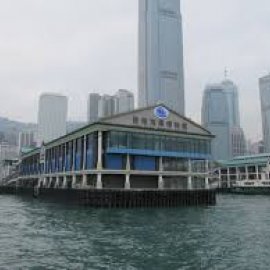The 21st Century Maritime Museum
-
English
-
ListenPause
I’m Peter Neill, Director of the World Ocean Observatory. I recently attended the bi-annual conference of the International Congress of Maritime Museums, an organization of some 150 maritime museums worldwide, meeting for the first time in Asia, in Hong Kong, with the theme “Connections,” as a means to attract the new museums in China and East Asia that have not previously participated and have much distinguished history to share. My role was to present to the delegates a new World Ocean Observatory program for sharing digital versions of temporary exhibits, extending their reach and life through Internet connection, and to give a public presentation on a vision of the maritime museum in the 21st century. My premise for the latter was that maritime museums are paralyzed in an outdated and apparently ineffective model that relies on collections of maritime art, artifacts, and historic vessels to tell a local or national history that does not necessarily connect to visitors in the numbers required to sustain operations. Attendance is down, despite efforts to re-install displays and re-invigorate programs. Some progress has been made in public outreach and educational services, but these, while good for the community, do not necessarily create the “magic” that appeals to donors and bureaucrats in times very competitive for available funds. There is a question of relevance, indeed whether or not such history matters. My argument was that it matters very much indeed, and that every one of the historic maritime themes evident in all these museums --- fisheries, immigration, trade, technology, scientific research, among many others –- are extremely visible and relevant today, very much in the public view, and perhaps better understood in the context of their history, just as that history would be better contextualized by the understanding of their manifestation now and in the future. Fisheries, for example, is a huge contemporary issue. Trade: Over 90% of all goods exchanged do so via maritime trade aboard container ships, oil tankers, and other vessels. Immigration: The news media is filled with images of “boat people,” refugees fleeing war, religious tyranny, and poverty, reaching new places and, hopefully new opportunities, via the sea. Science: Ocean technology is reaching new levels of sophistication – offshore applications, ocean-derived energy, sophisticated devices for ocean research and exploration, new tools to identify and understand ocean species and systems for better awareness of their potential contribution to human health and community well-being. In fact, the ocean has never been more relevant than it is today, and, if there is a failure, it lies with museums that choose to ignore this fact and its contributory value to public engagement and new audience development. Globalization, as evinced by the worldwide exchange of goods, people, and ideas, has never been so advanced and integral to local, regional, and international events. The ocean is also the place on which we will inevitably depend for our future survival – for climate, fresh water, food, energy, health, security, individual and community sustenance. Without the ocean we are at fundamental risk, and if that is not a relevant story to tell, I don’t know what it is. I delivered this message with some fervor, but I have no idea if it was received in any meaningful way. I was asking for radical change in the definition of a museum as a “retrospective” place, looking back through history through material culture. I was asking for a radical new “prospective” place where the disciplines of the humanities and sciences are mixed, where the story is not inhibited by locality when that locality was not longer limited in the contemporary moment. I was asking for the transformation of a passive place where people come with a determined set of expectations into an active space where artifacts and themes are juxtaposed in time and place, connected in unexpected ways. Irving Johnson, an American seaman well known for his descriptions of passages aboard square-rigged ships around Cape Horn, had an exhortation about survival aloft in a storm and for life in general: “Lean forward.” he said. That is what I was asking these museums professionals to do: to, to open their minds to the winds of change, to dare to challenge and explore as sailors have always done from that first moment they left the shore for a future unknown. We will discuss these issues, and more, in future editions of World Ocean Radio.
In October of 2015 Peter Neill, Director of World Ocean Observatory and host of World Ocean Radio, attended the bi-annual conference of the International Congress of Maritime Museums in Hong Kong to share his vision for maritime museums in the 21st century. His argument is that maritime history is not outdated, and that every theme evident at all maritime museums: fishing, immigration, trade, technology, etc. are all very relevant today and are perhaps best understood in the context of their history. In this episode of World Ocean Radio he asks for maritime museums to think of themselves less as homes for historical artifacts and more as places to make contemporary connections to the ways in which we relate to the ocean today.
About World Ocean Radio
Peter Neill, Director of the World Ocean Observatory and host of World Ocean Radio, provides coverage of a broad spectrum of ocean issues from science and education to advocacy and exemplary projects. World Ocean Radio, a project of the World Ocean Observatory, is a weekly series of five-minute audio essays available for syndicated use at no cost by college and community radio stations worldwide. A selection of episodes is now available in Portuguese, Spanish, French, Swahili, and Mandarin, enabling us to reach 75% of the world's population. For more information, visit WorldOceanObservatory.org/world-ocean-radio-global.
Image
Maritime Museum on the Hong Kong waterfront.
- Login to post comments



